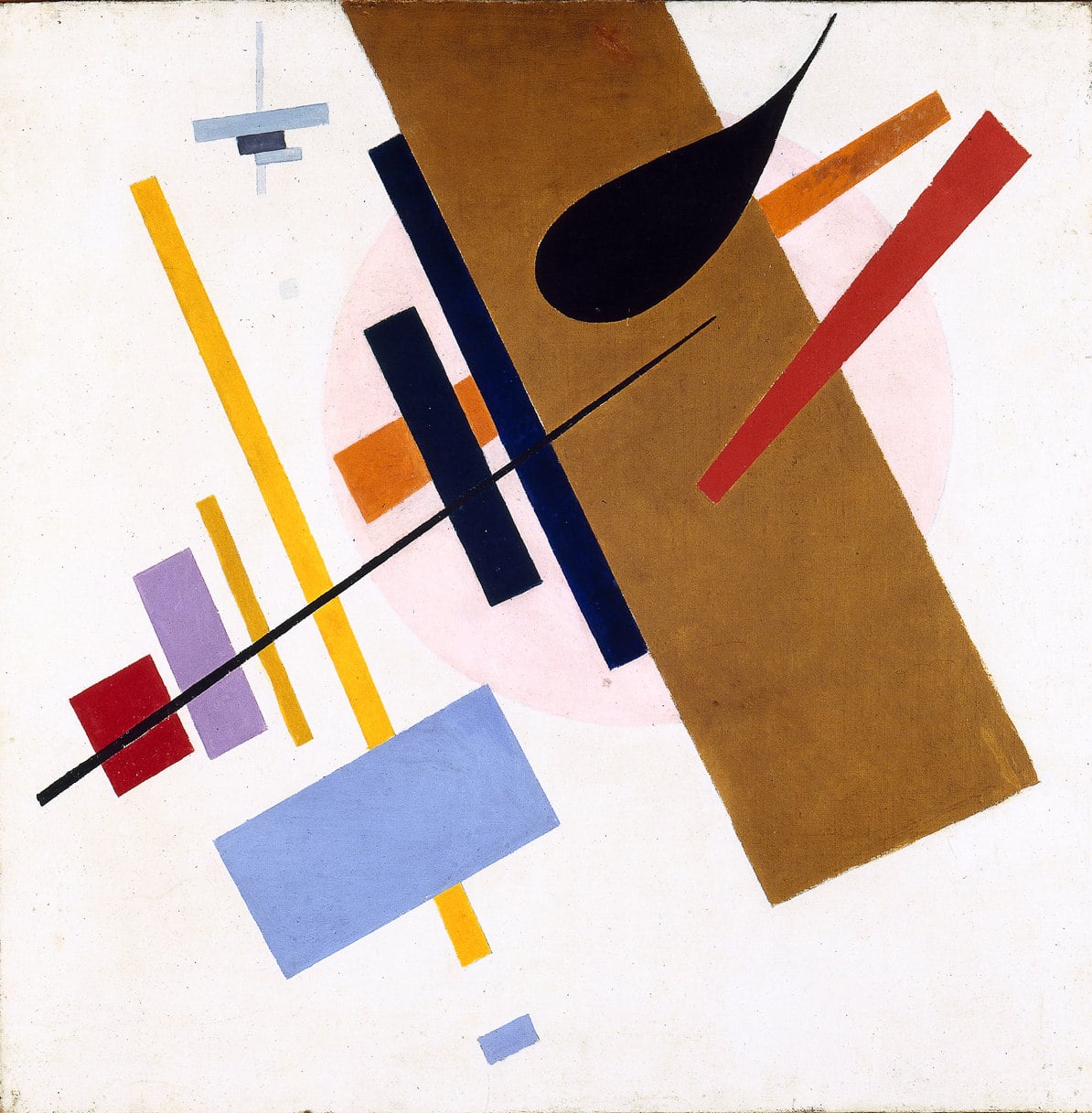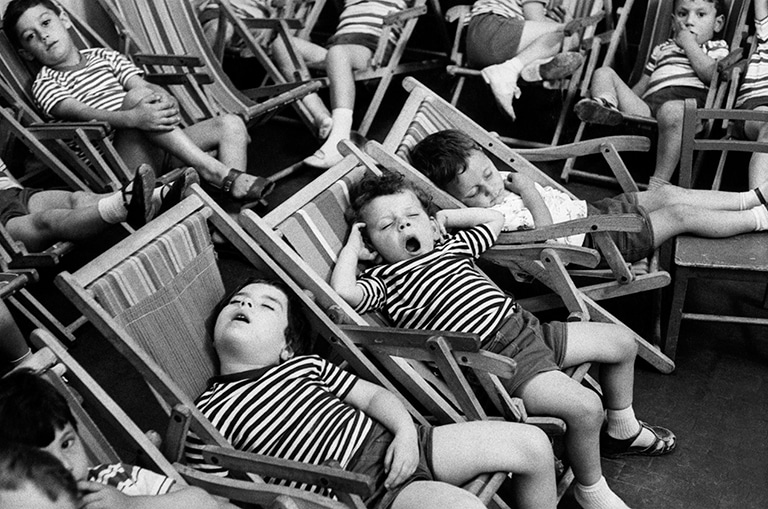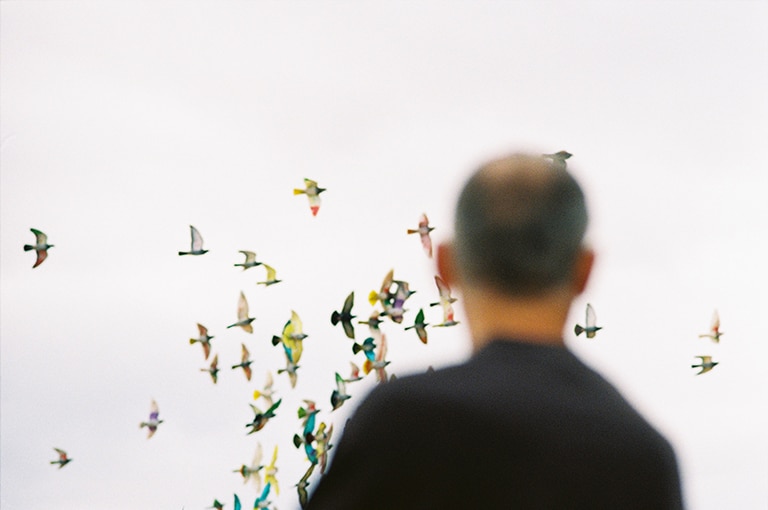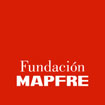From Chagall to Malevich: Art in Revolution
FEB.09.2019 ──────── MAY.05.2019

Kazimir Malévich
Suprematism, 1915-1916
The Regional Art Museum of Kovalenko, Krasnodar INV. КП-10432 Ж-358
© The Krasnodar Regional Art Museum named after F.A. Kovalenko, 2018, provided with assistance from the State Museum and Exhibition Center ROSIZO
Exhibition
FEB.09.2019 ── MAY.05.2019
Location
Recoletos Exhibition Hall
Paseo Recoletos 23, 28004 Madrid
Fundación MAPFRE, together with the Grimaldi Forum Monaco, is holding the From Chagall to Malévich: Art in Revolution exhibition, which brings together over 90 works and 23 publications from artists who lived through the transformation of a society full of hope and the belief that with the revolution, a new world was being ushered in.
This exhibition is on display at Paseo de Recoletos, 23 in Madrid from 9 February.
Exhibition produced by Fundación MAPFRE and curated by Jean-Louis Prat in conjunction with the Grimaldi Forum Monaco and based on the original concept of Grimaldi Forum.
The social unrest which resulted in the October Revolution of 1917 explains how the work of these artists accompanied, announced and annotated what would become the revolutionary process and the paradigm shift that led to its onset.
It was not the revolution that forged the avant-garde and modernity: it was the artists themselves who became revolutionary figures, certain that when the revolution arrived it would be everything they were hoping for, and, consequently, they would become what the revolution expected of them. However, reality did not live up to their expectations, and they were left disillusioned, something which also sowed the seeds for a new visual language.
The exhibition features leading figures such as Marc Chagall and Kazimir Malévich, to the extent that they are polar opposites in their innovation of avant-garde painting: in Chagall’s case, more poetic and narrative, thereby paving the way for surrealism; for Malévich, more radical and prone to geometric abstraction. The works of another twenty-seven artists who worked on painting and sculpture at the same time as responding to some of the basic tenets of these arts are also on display. This creative line-up features the notable presence of an important roster of female artists whose work was fundamental to the development of the Russian avant-garde before and after the October Revolution. Among others, Natalia Goncharova, Lyubov Popova, El Lissitsky, Vassily Kandinsky and Alexandr Rodchenko, as well as a selection of artists responsible for the renewal of graphic design, which experiences remarkable progress during such fervently creative and politically engaged times.
The exhibition concludes in the 1930s, a critical time in which artists find themselves unable to produce as much work due to the regime’s move towards a totalitarian state.
Female artists: In the period immediately preceding and following the October Revolution of 1917 artists were working together to bring to an end old traditions and hierarchies and were envisioning a new society. These aims allow for and in fact bolster the participation of women. This exhibition includes masterpieces from Xenia Ender, Alexandra Exter, Natalia Goncharova, Lyubov Popova, Olga Rózanova, Varvara Stepanova and Nadiezhda Udaltsova.
Neo-primitivism, tradition and modernity: With the first decade of the 20th century in full swing, acclaimed Russian and Ukrainian artists, and those of Jewish descent breathed life into neo-primitivism, a national movement that combined a renewed fascination for traditional forms of popular Russian art with the painting techniques of post-impressionism, which were currently in vogue in Paris and Munich. Although they continued to work with the classic genres such as landscapes, nudes, portraits and still lifes, these artists, including Marc Chagall, Natalia Goncharova, Piotr Konchalovsky, and >Ilya Mashkov applied bright expressionist colors to their scenes, as well as the flat surfaces and textures typical of cubism.
Suprematism, abstract geometry: Suprematism was a radical artistic movement introduced into Russia by Kazimir Malévich around 1913. The suprematist compositions based on geometric forms were completely abstract. This movement provided revolutionary artists with the necessary tools to create an innovative aesthetic for a new utopia. Free from the shackles of visual representation, their reduced forms according to Malévich, embodied “the supremacy of pure artistic feeling”.
Painting in four dimensions: In the same way as the cubists, the artist Mikhail Matyushin sought to access a forth dimension, boosting one’s awareness of one’s surroundings. This project could only have been introduced by a visionary artist who, through the exercise of his perceptive abilities was able to recognize the complexity and simultaneous nature of space itself and to express it visually. Matyushin’s theories and teaching led him to create innovative depictions of nature in two dimensions, together with his students Boris and Xenia Ender. His works, based on natural environments and phenomena, operate essentially as landscapes, although they bear little relation to the genre’s traditional conventions.
The exhibition From Chagall to Malevich: Art in Revolution brings together over 90 works and 23 publications from artists who lived through the transformation of a society full of hope and the belief that with the revolution, a new world was being ushered in. Don’t miss it! We bring art to you wherever you are, twenty-four hours a day.
Download press conference:
If you would like high resolution images, please let us know for which publication or media is your request: Click here.





